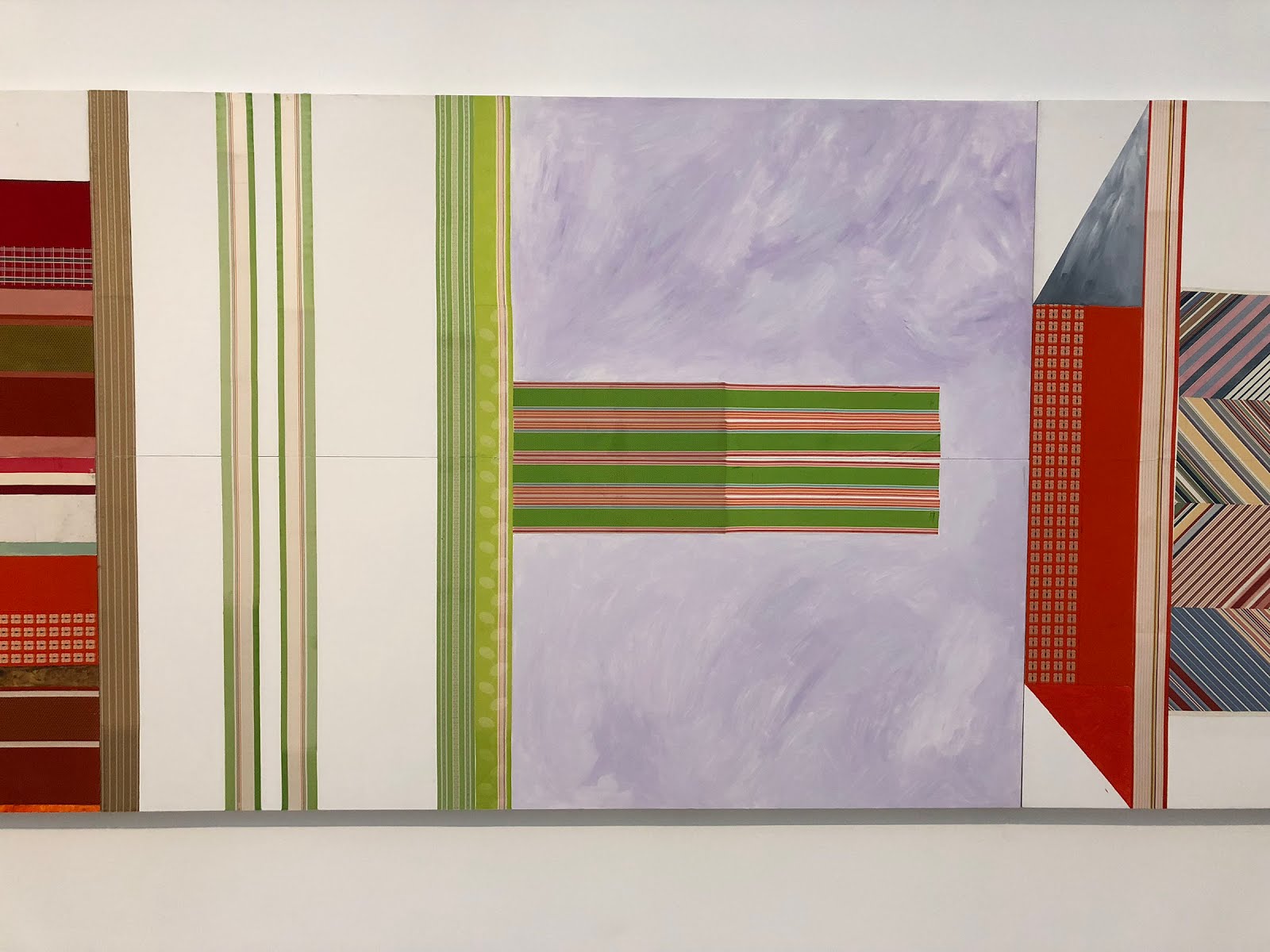A Short History of Long Rauschenbergs
Robert Rauschenberg said he intended The 1/4 Mile or 2 Furlong Piece (1981-98) to be the world's longest painting. Guinness World Records differs, but The 1/4 Mile sure is long (and the Guinness guy is no Rauschenberg). The 1/4 Mile is now at LACMA, which gets into the superlative business itself by saying its presentation is the first time the entire piece has been shown. The same claim was made when The 1/4 Mile was exhibited at the Ullens Center for Contemporary Art, Beijing, in 2016.
 |
| Robert Rauschenberg, Automobile Tire Print, 1953 |
 |
| Robert Rauschenberg, Hiccups, 1978 |
Begun three years after Hiccups, The 1/4 Mile is scaled up in size, ambition, and seriousness. It consists of 190 mixed-media murals, free-standing sculptural elements, and an ambient soundtrack.
 |
| Robert Rauschenberg, detail of The 1/4 Mile |
 |
| Robert Rauschenberg, detail of The 1/4 Mile |
Actually Rauschenberg ran out of space before he ran out of time. He achieved the 1/4 mile, more or less, in 1998, completing the work. He lived another ten years.
In 1999 Rauschenberg created another large multipanel work, Synapsis Shuffle. Potentially 220 feet long, this is an interactive piece in people other than the artist decide how to arrange 52 large prints/collages. When debuted at the Whitney in 2000, the celebrity shufflers including Martha Stewart, David Byrne, Chuck Close, Merce Cunningham, Robert Hughes, Walter Hopps, and Michael Ovitz.
Grace Glueck damned Synapsis in The New York Times (implicating 1/4 Mile as well):
"It is also amazing how Mr. Rauschenberg himself has kept shuffling the same ideas, more or less, into larger and larger projects that take up enormous gallery space the country's museums.… The pretentiousness of 'Synapsis Shuffle,' the celebrity-kissing self-promotion it has involved, and the wasteful allotment of 6,000 square feet of gallery to it at the space-challenged Whitney are not cause for celebration."
Glueck further lamented that Leonard Lauder has already bought Synapsis and promised it to the Whitney, for an eternity of future celebrity shuffling. ("I think Synapsis Shuffle is as good as the Combines," countered Arne Glimcher. Not exactly impartial, he had sold it to Lauder for a reported $9 to $10 million.)
 |
| Installation photo of Synapsis Shuffle at the Grand Rapids Art Museum, 2012 |
Where does that leave The 1/4 Mile? Today everyone agrees that Rauschenberg had a front-loaded career, peaking with the Combines of the 1950s. But the art market saw things differently. Rauschenberg's market value continued to soar long after the quality of his work was in decline.
Aside from the epic concept of a 1000-foot long artwork 17 years in the making, The 1/4 Mile is not a deeply original work. It is backward-looking, intended in part as a personal retrospective in the spirit of Duchamp's Boîte-en-valise. However, it shows a level of painterly and sculptural invention unlike many of the late works churned out for the market. The 1/4 Mile presents the "late style" of an artist who often isn't considered to have one.
 |
| Robert Rauschenberg, detail of The 1/4 Mile |

Comments